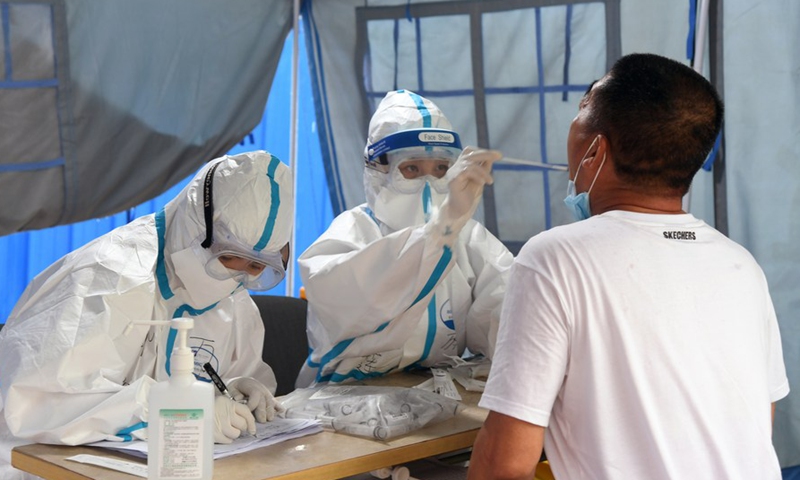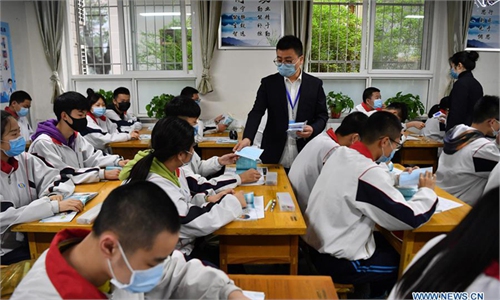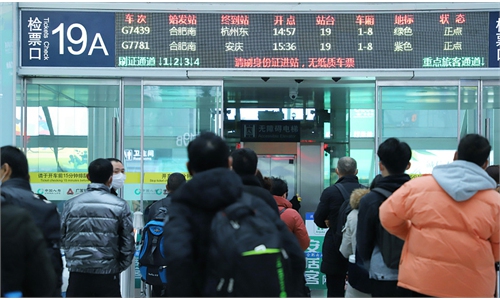
Medical workers collect a throat swab from a citizen at a nucleic acid testing site in Haidian District of Beijing, capital of China, June 18, 2020.File photo:Xinhua
Beijing has released a thorough epidemiological investigation into the recent 16 cases of COVID-19 reported in the capital's Shunyi district, which showed that the sudden spike was caused by an imported case from Indonesia, Pang Xinghuo, deputy director of the municipal center for disease prevention and control, said at a press briefing on Wednesday.
Shunyi district, close to Beijing Capital International Airport, has reported 16 COVID-19 patients, including 14 local confirmed cases, one asymptomatic case, and one imported case, since the first infection was identified on December 23.
By analyzing the genetic sequence of the virus, the results show that it belongs to the L-genotype of the European branch, which shares high similarity with the virus strains found in Southeast Asia in November, suggesting the latest Beijing outbreak is imported from abroad.
The initial COVID-19 case, which led to the cluster of infections in the region, was imported from Indonesia - a 28-year-old man who entered East China's Fujian Province in late November and later traveled to Beijing's Shunyi district, Pang said.
It is reported that the man was sitting next to a confirmed patient from Indonesia on the flight from Indonesia to Fujian. He went to Beijing on December 10 after completing his 14-day quarantine in Fujian and having tested negative after a nucleic acid test. He later tested positive in a serum antibody test and negative in another nucleic acid test on December 26. Samples from his living and working areas tested coronavirus-positive and the man was taken to Beijing Ditan Hospital. His nucleic acid test turned positive on December 28 and he was identified as a silent carrier.
This imported case infected his roommate and then caused infections of a supermarket employee and a cluster of infections of online car-hailing drivers and friends and workers in the Jinma industrial area via group activities.
Pang noted that there is no evidence that this train of infections is related to the asymptomatic case reported in Beijing's Xicheng district and the case who has departed China for South Korea.
Zhi Xianwei, a senior official in Shunyi district told the Wednesday press conference that the district has canceled all activities with more than 100 people attending, stopped crowd activities and strengthened prevention work at restaurants and schools.
The thorough epidemiological survey not only shows the infection process of these cases in Beijing, but also impressed netizens, with many commenting on Sina Weibo that the tracking process is like a "detective novel."
A netizen named Doueryu wrote, "Beijing's ability to investigate the transmission process of 16 cases in such a short time and in such a clear way not only impresses the public but also offers confidence to Chinese people in the country's capability in controlling the epidemic."
Some suggested that the epidemiological survey showed the necessity to prolong the quarantine period for people entering China or the need for follow-up nucleic acid tests after the 14-day quarantine.
Global Times



